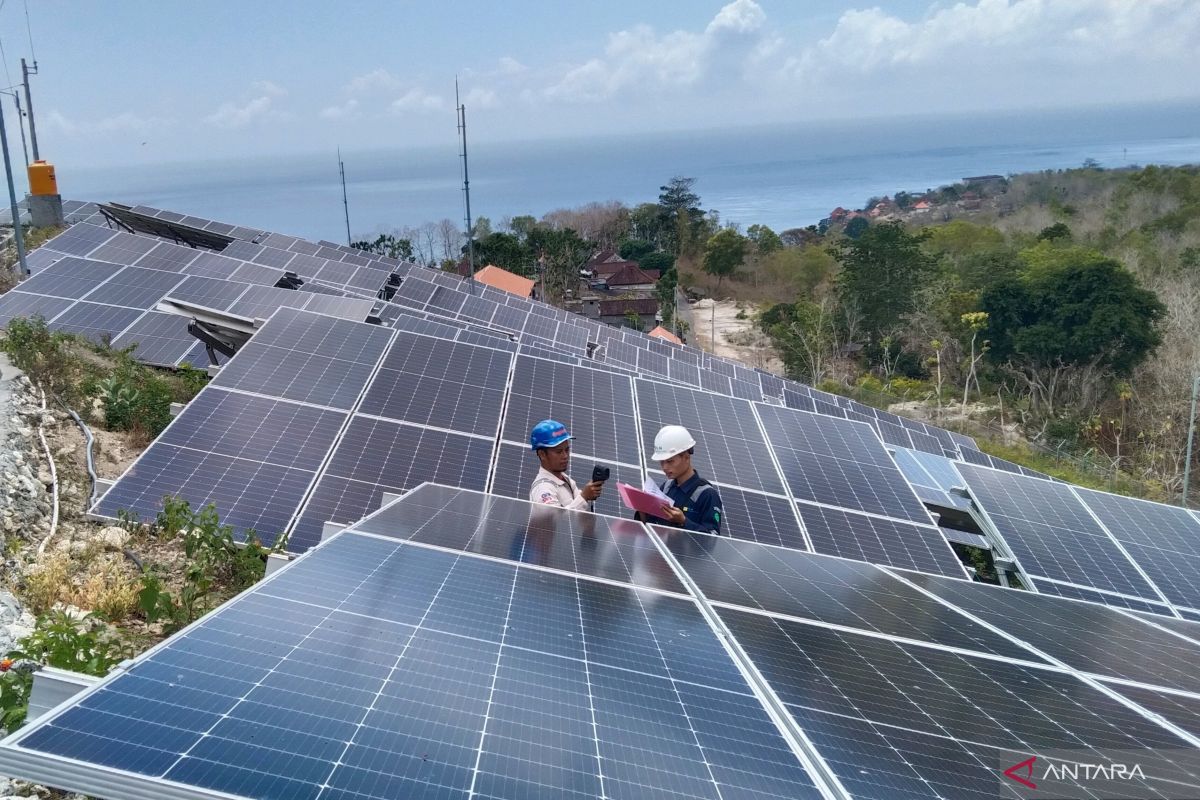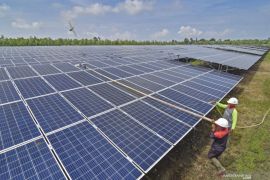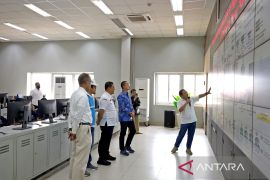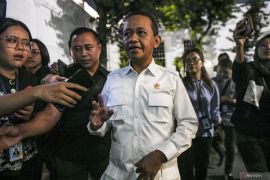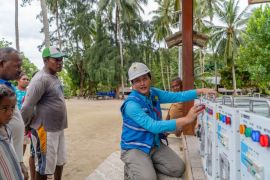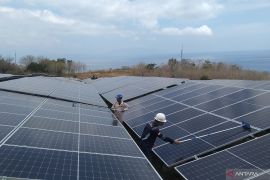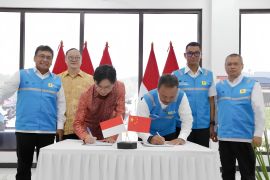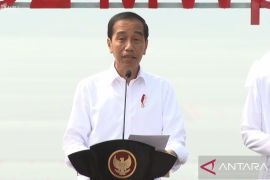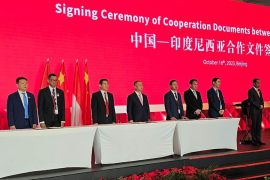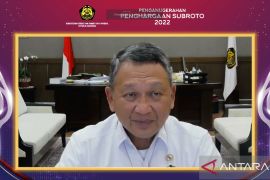The group of islands located southeast of the Bali mainland usually experiences the rainy season last compared to other areas on the Island of the Gods.
The Meteorological, Climatological, and Geophysical Center (BBMKG) - Region III Denpasar has forecast that this year, the rainy season in the area will only start in December.
However, the hot weather in the Nusa Penida Islets, which consist of Nusa Penida, Nusa Lembongan, and Nusa Ceningan, is a blessing in terms of energy potential.
Their hilly topography with limestone cliffs and marine tourism potential have made the three islands among the favorite destinations of domestic and foreign tourists in recent years.
Nusa Penida has become increasingly well-known ever since its iconic local destinations went viral on social media. In addition, its image of being far from the hustle and bustle of daily life has led to travelers beelining to the island for a vacation. Need for solar power
The potential of solar thermal energy in Nusa Penida has been tapped by state electricity company PT PLN through its subsidiary PT PLN Indonesia Power by building a solar power plant.
The development of infrastructure to produce clean energy is needed to support the growth of green tourism in Nusa Penida.
In addition, the electricity needs of the three inhabited islands, which cover an area of around 210 square kilometers, have also continued to increase along with the growth of tourism activities.
According to the Indonesian Hotel and Restaurant Association (PHRI) of Klungkung Regency, the average movement of tourists in Nusa Penida has reached around 5 thousand to 6 thousand people per day.
As many as 70 percent of passengers crossing to Nusa Penida Island daily are foreign tourists and the rest are domestic, as per data from the Benoa Harbormaster and Port Authority Office.
That figure does not include passengers crossing via Kusamba Port in Klungkung Regency and Padangbai Port in Karangasem Regency, Bali.
Thus, innovation in the energy sector is needed to boost the installed power capacity to supply electricity to the three islands.
Clean energy supply
A solar power plant has been constructed in Suana village, Nusa Penida district, Klungkung Regency, which is about 16 kilometers away by road from Banjar Nyuh Pier, Ped Village, Nusa Penida.
Assistant manager of security and public relations (Humas) at PT PLN Indonesia Power - Bali Generation Business Unit, I Made Rakayana, informed that the power plant has been built on an area of approximately 4.5 hectares.
As far as the eye can see, hundreds of solar panels have been installed at the plant to absorb sunlight.
Optimal sunlight in Nusa Penida is absorbed by the cells of the solar panels and then combined to produce energy in the form of direct current (DC).
The DC is then transformed into alternating current (AC) with the help of 18 inverters and 8 battery units or Battery Energy Storage Systems (BESS).
Furthermore, the clean energy is increased with the help of a number of transformers and distributed through the electricity network to customers.
The physical construction of the new renewable energy facility was carried out in April 2022, with the domestic content level reaching 48 percent.
The solar power plant began operating in November 2022, with an environmentally friendly electricity capacity of 4.2 megawatt peak (MWp) or equivalent to 3.5 MW. It is equipped with a BESS of 1.84 MW.
A BESS is one of the components of electrical power that stores power in new renewable energy (EBT) generators to help meet load needs and serve as an energy reserve, especially in emergencies.
Reducing carbon emissions
The clean energy produced by the solar plant is distributed to the local community, including to support tourism needs, with isolated electricity system services — only for the Nusa Penida, Nusa Lembongan, and Nusa Ceningan areas.
The green energy capacity is helping complement the supply of electricity from the diesel power plant in Kutampi Village, Nusa Penida.
The solar power plant is also helping reduce dependence on fossil fuels used in the Kutampi diesel power plant, which produces around 11.5 MW of electricity.
The peak load on the three islands is estimated to be around 14.8 MW, with an average duration of around one hour.
With the available capacity and considering the peak load on the three islands, the supply of electricity from the solar and diesel power plants still leaves electricity reserves that can be utilized.
The new renewable energy mix is expected to support the government's target of achieving zero carbon emissions by 2060.
Currently, the solar power plant in Nusa Penida is helping cut emissions by around 9 thousand kilograms of carbon dioxide equivalent (CO2e) per day, or an estimated 4.19 thousand tons of CO2e per year.
More generators
The presence of the new renewable energy generator has been truly felt by tourism stakeholders in Nusa Penida, including Wayan Sukadana, who is also the secretary of PHRI Klungkung District.
The tourism entrepreneur, who wears a characteristic cowboy hat, manages a 10-room villa in the same village as the solar power plant.
So far, electricity has been one of the challenges faced by the community there, including tourism stakeholders.
"After the solar power plant was built, the supply of electricity began to stabilize. With the projected increase in electricity needs, of course, the supply of clean energy needs to be increased," Sukadana informed.
The provision of this vital infrastructure is also in line with the wishes of tourism actors who are encouraging environmentally friendly and sustainable tourism in Nusa Penida.
The carbon footprint caused by human activities on the island could also be reduced by distributing clean energy.
PLN Indonesia Power plans to add new renewable generators in Nusa Penida in the next few years. It will also develop the solar power plant and BESS with a capacity of 10 MW.
The expansion of clean energy infrastructure is in the study stage, and is being continuously refined to mature the development of new renewable energy in Nusa Penida.
The hope is that Nusa Penida Island will become increasingly independent in producing more environmentally friendly energy with the support of PLN or through collaboration with other agencies by maximizing the potential of natural resources.
Related news: Preserving hydrogen as Indonesia's sustainable energy in the future
Related news: Bali discusses 2045 emissions target with international organizations
Editor: Rahmad Nasution
Copyright © ANTARA 2024
